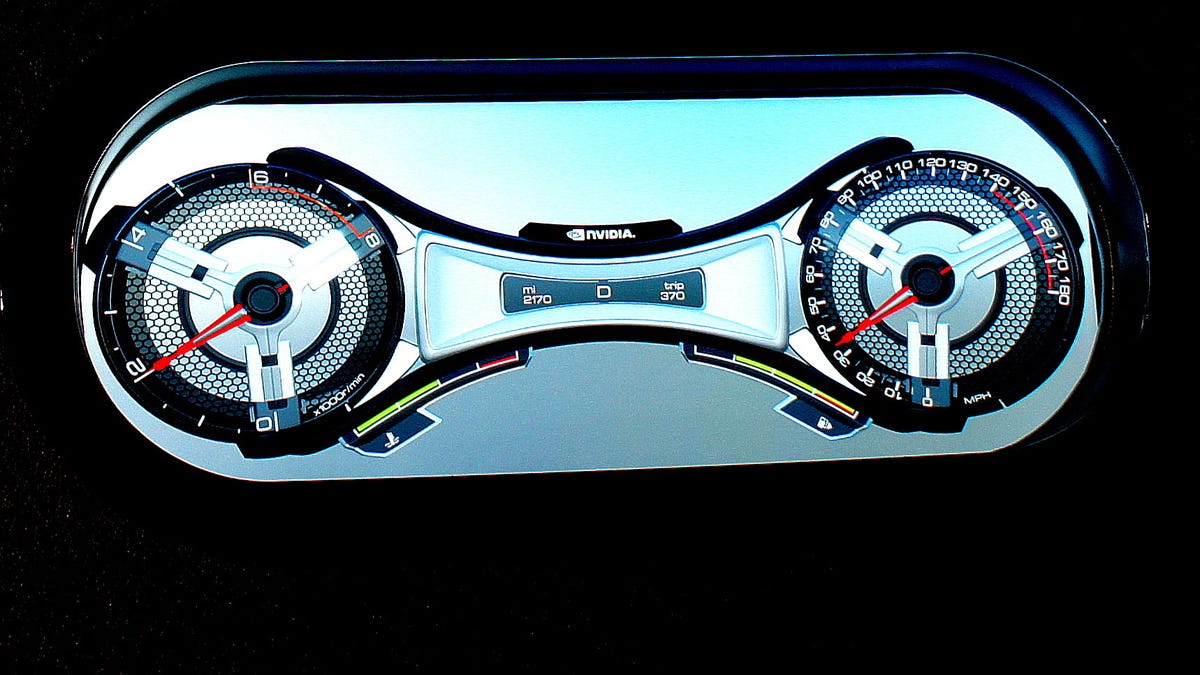Nvidia K1 chip sees the open road
At CES 2014, Nvidia demonstrated how its K1 graphics processor unit analyzes camera imagery to recognize street signs, lane lines, and other vehicles.

LAS VEGAS -- Driver assistance systems that will enable the autonomous car rely on radar, lasers, and cameras to see the road, but all that information also needs to be analyzed and understood. Nvidia demonstrated how its new K1 graphic processor, announced at CES 2014, can recognize street signs, lane lines, and other vehicles.
At its booth, Nvidia fed a test bed fitted with the K1 chip a recorded video of a drive down a road from a single camera. Using image recognition libraries, the chip analyzed the video and highlighted speed limit signs in red, other vehicles in blue, and lane lines in green.
The chip processed this simple video on the fly, something it would have to do in a real-world deployment.
Danny Shapiro, Director of Automotive for Nvidia, told CNET that the level of processing shown in the demonstration could not be handled by Nvidia's earlier Tegra chips. However, the new K1 has similar power needs, only about 5 to 7 watts, same as the previous Tegra generation.
In a car, the K1 chip would work behind the scenes, analyzing data in real time from a variety of sensors, as it did the simple video in the demonstration, building a three dimensional representation of the immediate environment. An automaker would build in appropriate responses, whether alerts or actual control over braking or steering, to respond to elements of the environment.
In the Nvidia demonstration, the K1 chip analyzed speed limit signs and showed the current speed limit on the display.
Shapiro noted that Nvidia can provide a basic library of visual recognition patterns for different objects, street markings, and signs, but automakers would refine the recognition patterns with extensive real-world testing.
Nvidia showed another capability of the chip in its booth, rendering virtual instrument clusters on the fly. In this demonstration, Nvidia applied virtual materials to a three-dimensional virtual instrument cluster mock-up, such as aluminum and carbon fiber. The rendering looked very realistic, incorporating dynamic lighting effects. Many automakers are beginning to deploy virtual instrument clusters in their vehicles. The Nvidia demonstration showed how a driver could change the theme of that instrument cluster.
Audi, BMW, and Tesla currently use Nvidia's chips in their cars. At CES 2014, Audi announced it would be using the Nvidia K1 chip in a future vehicle. Shapiro said that Nvidia would be announcing a new client, a mainstream Asian manufacturer, at the Geneva auto show in March.

